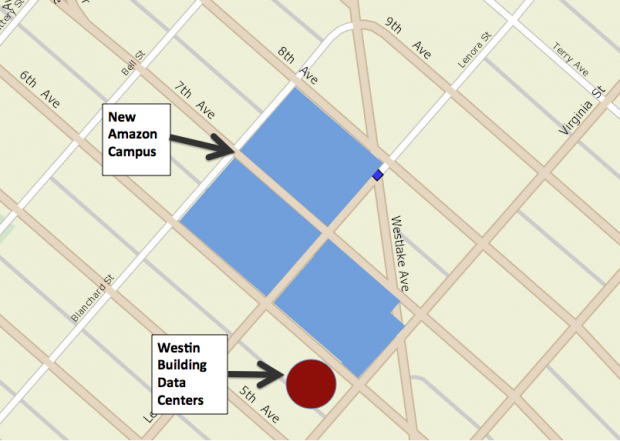Data centers heat homes and offices

The waste heat of the Telecity Condorcet Paris data center servers heats the arboretum in the same building
Data centers generate a large amount of excess heat. Although these temperature surpluses from 27 ° C to 46 ° C are relatively small for most standard heat pipes, it needs to be removed somewhere. To dump waste heat into the environment is a waste of a resource, because many residential and office premises in the vicinity of the data center need this warmth. Why not heat them with free energy?
More and more data centers are finding options for using waste heat. For example, the heat of the servers of the French company Telecity heats the arboretum in the building of a Parisian data center. Here, scientists from Société Forestière and the French National Institute for Agricultural Research (INRA) are trying to recreate the climatic conditions that will prevail in Paris by about 2050 - and see how various plants from around the world survive in such heat.
There is no arboretum in IBM's Uitikon Swiss data center. But there is a public swimming pool nearby! And the water of this pool is now heated through a system of heat exchangers. This is rather a demo, because the data center generates much more energy than is needed for one pool. IBM says that the waste heat is enough to heat 80 homes. But in practice, only one pool benefits.
A much more useful system was established by the engineers of the IBM data center and Syracuse University in New York. Here, power supply and cooling are provided by 12 Capstone micro-turbines powered by natural gas . So, in winter, steam with a temperature of 307 ° C from the work of generators through heat exchangers heats the water, which is supplied to the next office building and is used in the heating system. However, in this case it cannot be said that this is exactly the data centers that heat the office, because it uses waste heat from generators, not servers.
The data center of the Notre Dame Research Center heats the municipal greenhouse , and the Quebecor data center in Winnipeg, Canada, edits the municipal newspaper .
But the most useful use of excess heat in data centers would be the heating of residential buildings, as it has been done for decades in various countries around the world by industrial enterprises that supply waste heat through pipes to the heating system.
Heating of residential buildings and offices
Perhaps, the first in the world began to heat the surrounding residential buildings data center, which is located under the Orthodox Assumption Cathedral in Helsinki, Finland. In 2009, it was planned that this data center would supply heat to 500 large private houses. This is comparable to the work of one large wind turbine, writes Reuters.
Progressive example predecessors followed the company Amazon. In September 2017, Seattle US authorities agreed to build a "waste heat transportation system and auxiliary tunnels under and across Lenore Street, between 6th and 7th Avenue," as well as on neighboring streets, with further distribution to neighboring neighborhoods.

The location of the data center and the new Amazon campus
Here, next to the data center on three blocks will be located a new Amazon campus, and next to two new office buildings of Amazon.

Campus and two new Amazon office buildings
Heat exchange installation here will be unusual. Hot water from the data center will not only warm the office buildings (and probably the campus), but, having lost its temperature, will then return through the pipes back to the data center to cool the servers. That is, it is a closed self-sufficient system. Experts say that teplomben between neighboring buildings is a very unusual engineering development.
Heating the surrounding houses and office buildings, data centers are more seamlessly integrated into the urban environment and allow their owners to receive additional income, albeit not very large. Today, the owner pays about 3,500 rubles for heating the average Russian apartment. per month ($ 60). Thus, heating at least 500-1000 apartments in several apartment buildings, the owner of the data center will receive from 1.75 million to 3.5 million rubles. (from $ 30,000 to $ 60,000) per month. Not very much, but as extra money "on the garbage" is quite acceptable.
All Articles